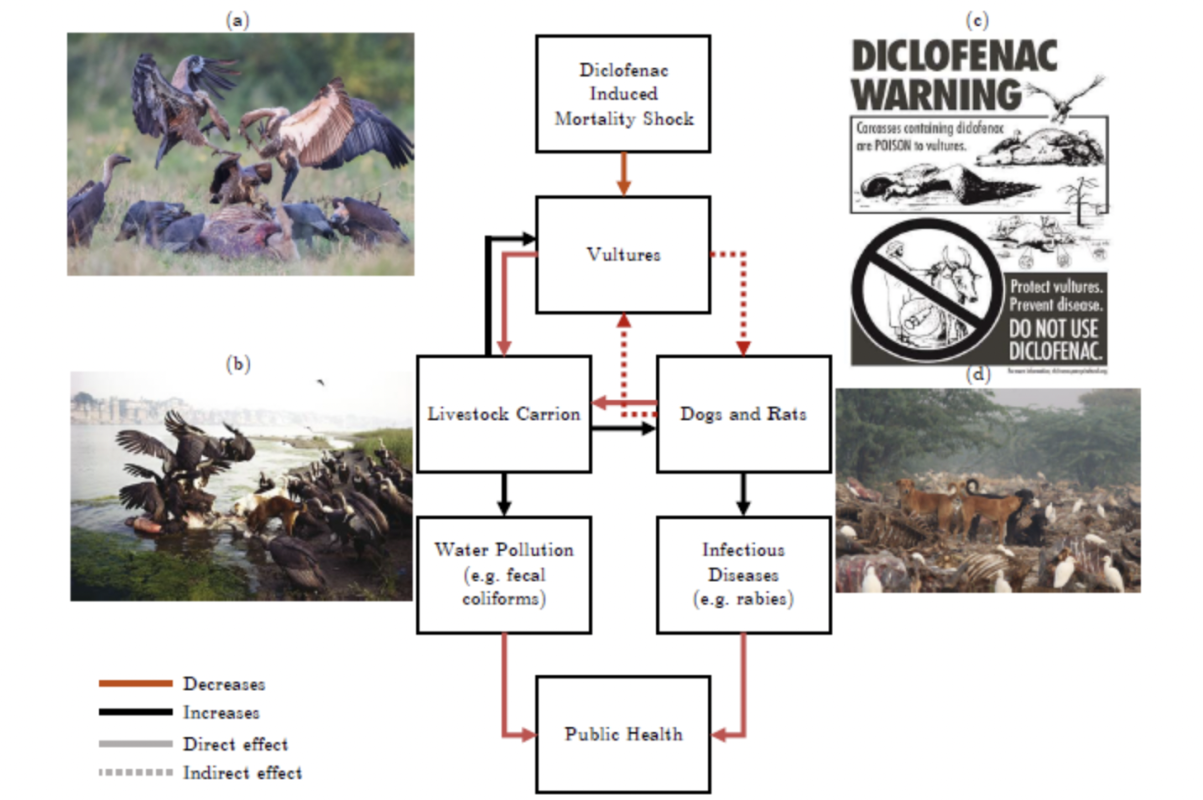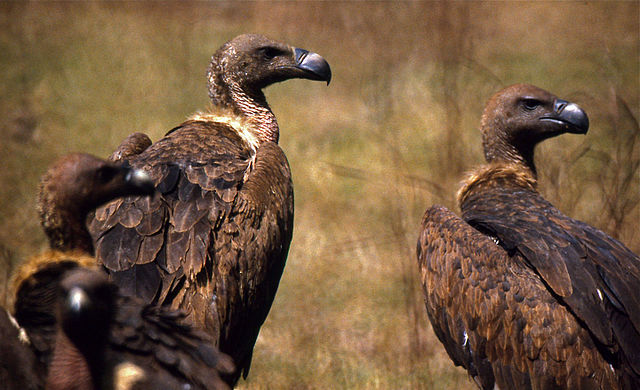Often when we hear that a species is endangered, we think about it as an isolated event.
However, the death of one species can have catastrophic effects on the whole ecosystem, including humans!
Let’s learn about how the disappearance of vultures in India led to the death of 500,000 people.
Background On India's Vultures
Vultures used to be abundant in India, with a massive population of 50 million. They are birds of prey that primarily eat the carcasses of animals. These birds are very efficient -- a group of them can finish off a carcass in 45 minutes! Vultures are capable of consuming at least 50 million animal carcasses each year.
However, in 1994, farmers in India started giving diclofenac to their cattle, a cheap painkiller traditionally used on humans. It was soon discovered that diclofenac was fatal to vultures, whose diet consisted mainly of cattle carcasses. Over the next decade, India’s vulture population drastically dropped by 95% from 50 million to just 20,000. This was the fastest decline of any bird species ever recorded.
In 2006, Indian officials banned the use of diclofenac in livestock, but it was too late, and the damage had already been done.
Human Cost
 In a new study, economists Anant Sudarshan and Eyal Frank estimated that between 2000 and 2005, around 500,000 people died following the vulture's dramatic decline.
In a new study, economists Anant Sudarshan and Eyal Frank estimated that between 2000 and 2005, around 500,000 people died following the vulture's dramatic decline.
In districts where vultures used to thrive, the mortality rate increased by over 4% since 1994 -- the year the drug was made available at a cheap cost for cattle. Sudarshan and Frank calculated that these premature deaths cost India up to $69 billion each year.
The reason behind this catastrophic damage was the key role of the vulture in India’s sanitation system. Without vultures to clean up, the rotting animal bodies containing bacteria and other pathogens often ended up near water sources and contaminated the water. The fecal matter in water more than doubled in these areas.
Additionally, the decline of vultures led to the rise of feral dogs and rats which were competitors for the carcasses. However, feral dogs and rats are not nearly as good at cleaning up animal bodies as vultures and have spread diseases such as rabies and anthrax to people.
Lessons From The Study
This new study highlights the role of the vulture as a keystone species -- a species so pivotal to their ecosystem that their loss could have fatal consequences for humans. Sudarshan and Frank’s research shows the high returns of investing in keystone species in India and around the world.
These findings should also help encourage the prioritization of conservation efforts for vultures in India. Just last year 20 vultures that were bred in captivity were released with satellite tags in West Bengal, and 300 vultures were recorded in a recent survey in southern India. Although vultures are slow reproducers and are difficult to bring back, it is crucial to put more effort into this task.
The enormous consequences of the decline of vultures in India emphasize the importance of preserving each species. Due to the interconnectedness of nature, what harms one species could be detrimental to us all.
Sources: BBC, VOX, NYTimes, CBS, UChicago







